Jurassic World Evolution 2 gets back to the pure wonder of just seeing dinosaurs
Finally, a Jurassic Park game where seeing the dinosaurs is the main attraction.
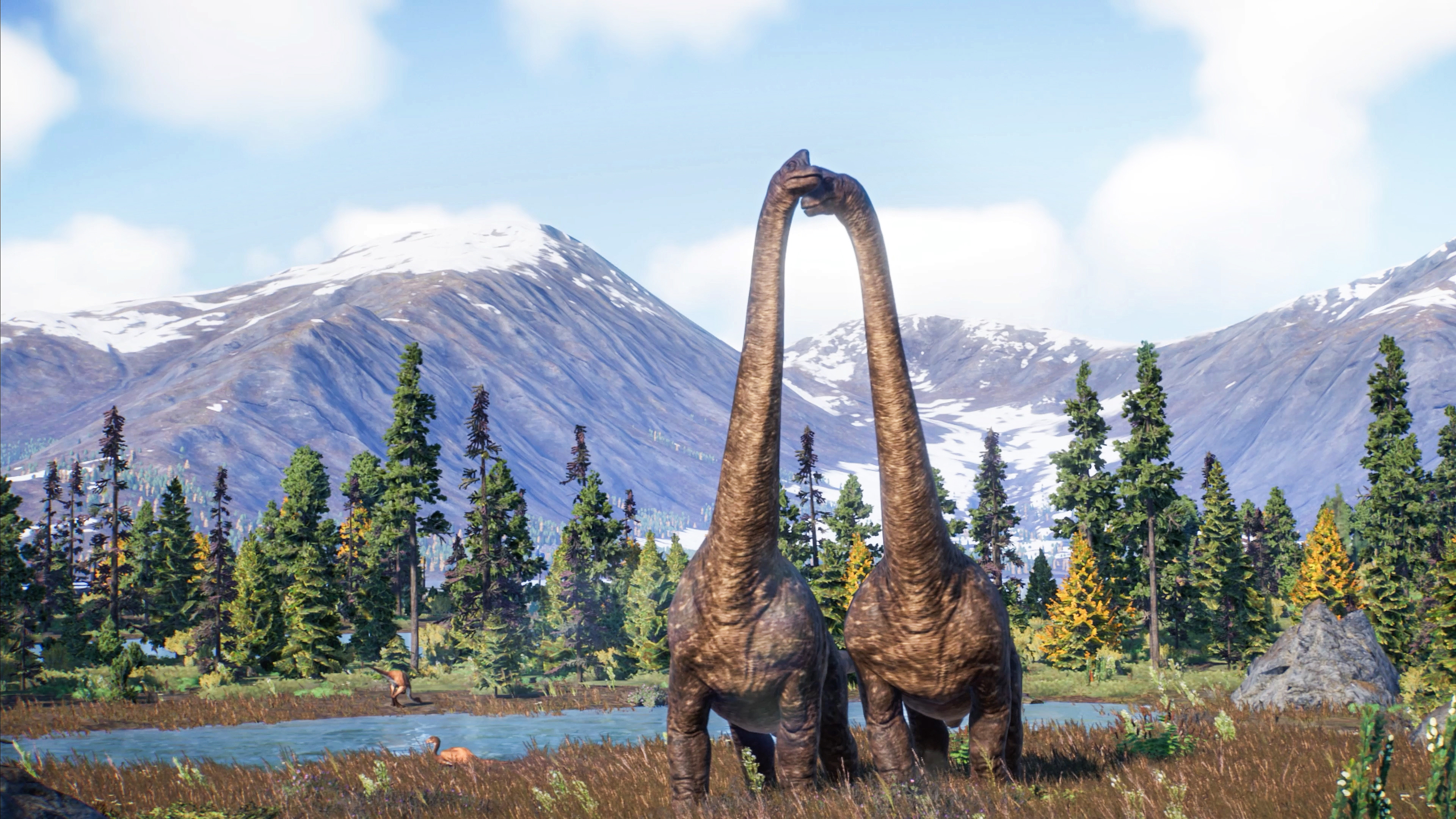
In Jurassic World Evolution 2, Earth has entered the so-called Neo-Jurassic Age, a brand new time period signalling the re-introduction of dinosaurs to the planet. Following the events of the most recent film, 2018's Jurassic World: Fallen Kingdom, our large reptilian friends now coexist with us humans, frolicking around Earth's green pastures, scorching deserts, and the backyards of suburban family homes.
Even though they've only just escaped, Jurassic World Evolution 2 wants you to put the dinos back in their habitats and, keeping in line with the first game, tasks you with building a sprawling dinosaur wildlife park. After a two-hour preview, it's interesting to see what changes Frontier has made to its dinosaur-centric management sim, especially considering the success of the studio's other creature theme park sim, Planet Zoo. Sure, king penguins and meerkats are cute, but prehistoric reptiles from another age have a special place in my heart.
In the first chapter of the campaign a poacher ring has recently been broken up, and I need to locate the dangerous dinosaurs that are now in the wild and build a facility nearby to contain and treat them. There are two Carnotaurus wandering around the main area so I quickly build a fenced enclosure and add a control centre, operational response facility, and power generators—it's basic but will do for now. It's then time to look for the other escaped dinosaur, which means leaving the centre and tracking it in the wild.
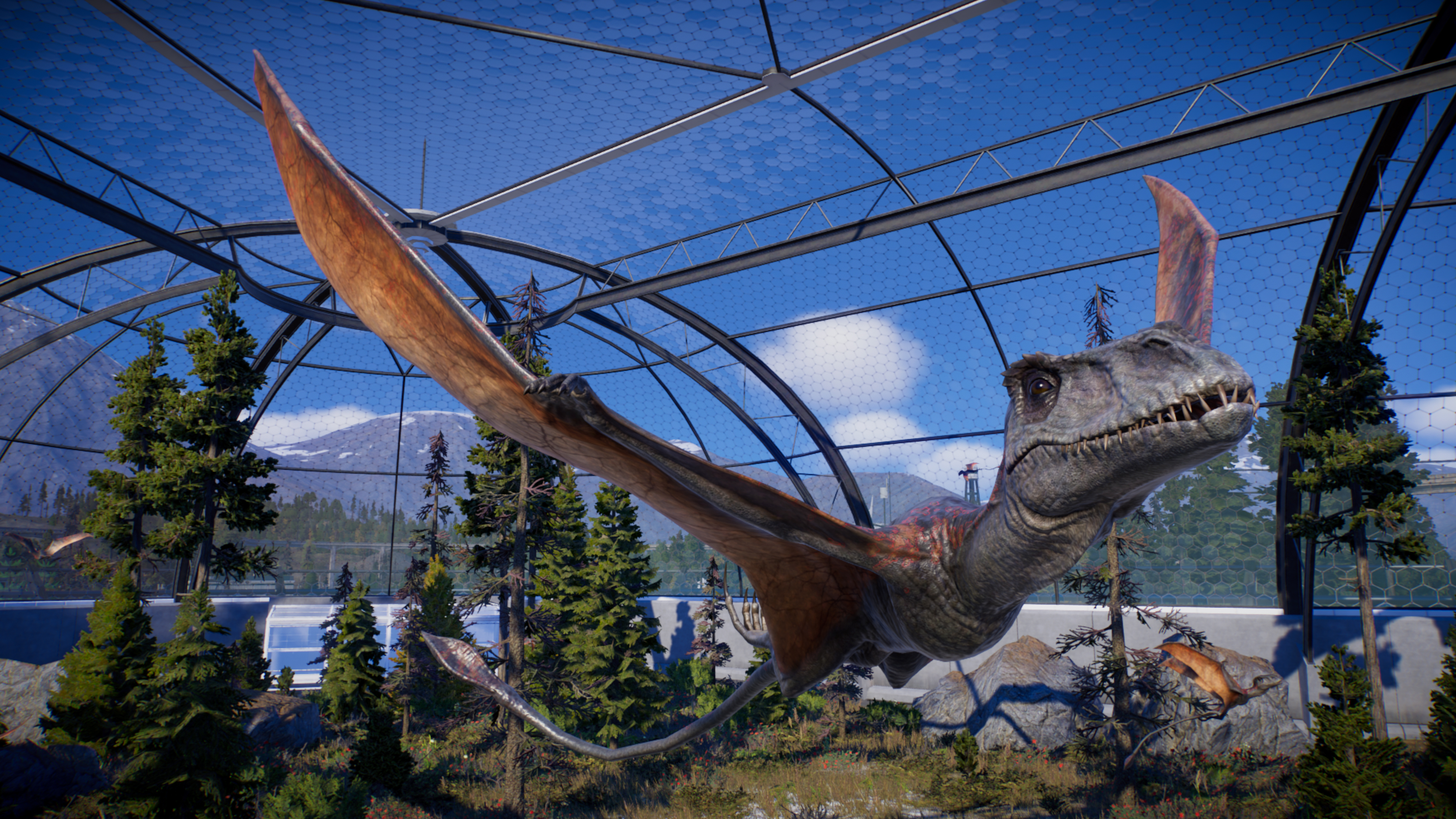
Jurassic World Evolution 2 is no longer contained to the Muertes Archipelago setting of the first game, so this chapter is set in the snowy mountains of Washington. Driving works as it always did, but this time you can actually leave the park and explore the surrounding landscape.
The blizzard eventually eases off, revealing a large open area with herds of different dinosaurs just casually wandering about
Following a tracker on the top of the screen and listening to characters from the films chirp in with advice, I drive the jeep through a woodland covered in heavy snow. The blizzard eventually eases off, revealing a large open area with herds of different dinosaurs just casually wandering about. Seeing brontosaurus and triceratops roaming about in the wild is pretty cool and, together with driving around Washington's natural scenery, is a breath of fresh air for the sequel.
After finding the missing dinosaur, an angry allosaurus stomping about the woods, the game switches to helicopter mode so I can tranquilize the ferocious beast and move them back to the wildlife centre. The allosaurus is in a bad way and has suffered from a major fracture while it was thrashing about in the wild so it needs treatment. Instead of having rangers in the enclosure pumping a special all-healing juice into dinosaurs like in the first game, you'll need to scan the dinosaur and then transport them to a palaeo-medical facility where assigned scientists can give treatment.
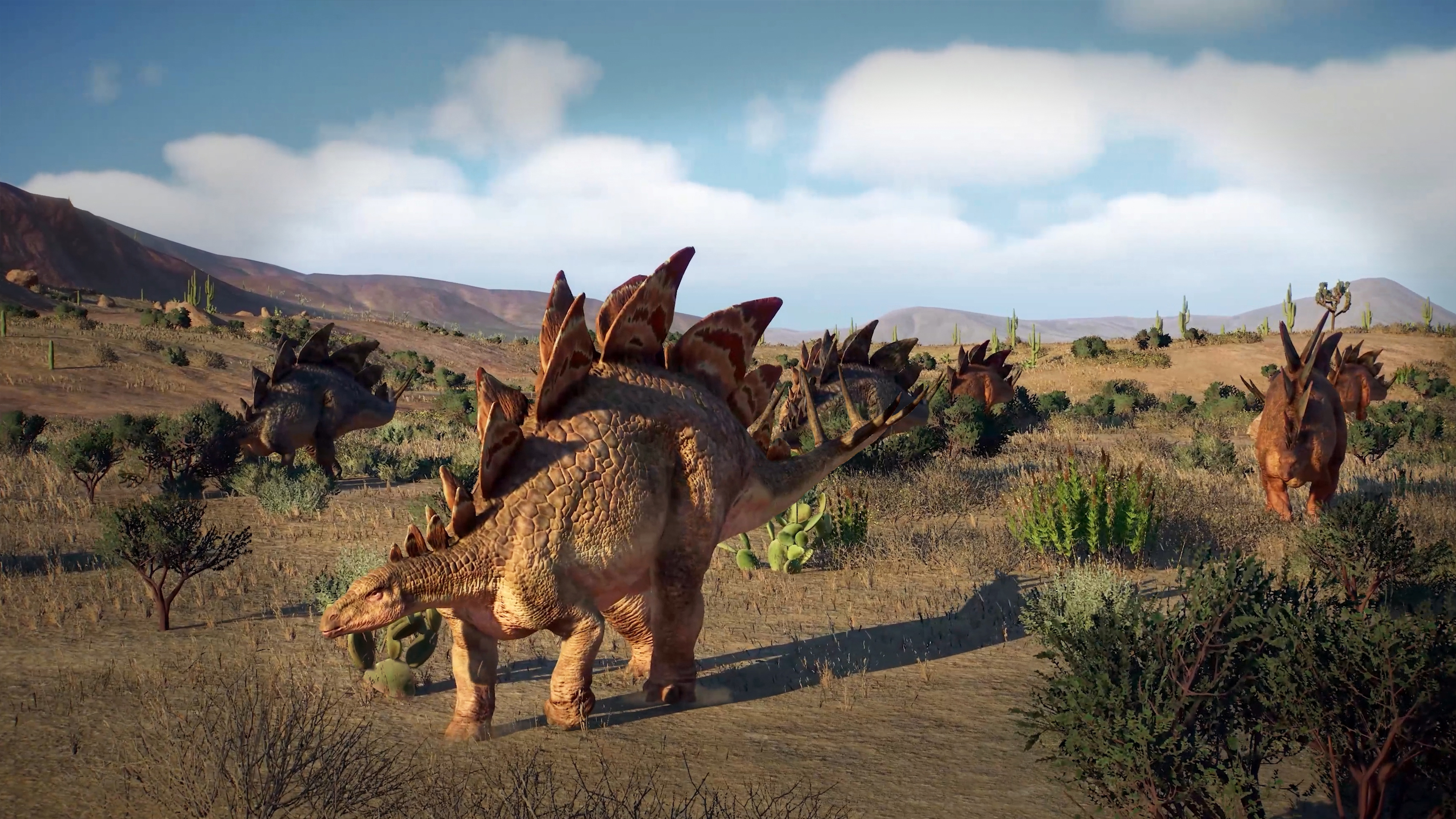
Wanting to see how the allosaurus was doing, I zoomed in closely to get a better look at him. The first thing I noticed was that he was covered in bloody scratches, which would soon be treated, but the second thing is how lifelike the dinosaur looked. Frontier has boasted, rightly so, about how realistic its animals look in Planet Zoo, and it looks like Jurassic World Evolution's dinosaurs have gotten the same treatment. They are by far the best-looking dinosaurs I've seen in games. It's not just how they look but also the details in how they move is incredible. If you zoom in on a dino as it's wandering around the screen shakes with each footstep, which is lovely.
The biggest gaming news, reviews and hardware deals
Keep up to date with the most important stories and the best deals, as picked by the PC Gamer team.
I leave Washington's chilly tundra for the sun-kissed mountains of Canada to check out Jurassic World Evolution 2's challenge mode. I need to build a park from scratch and get a 5-star rating to complete the mission, which involves extracting fossils, carrying out research, and building attractions for guests.
Challenge mode lets you dip into Jurassic World Evolution's dino gene pool, of which there are 75 different species. The two newest additions to the reptile roster are the flying and marine dinosaurs, something that the Jurassic World community has been requesting. Unfortunately, there wasn't much time in the preview to check out either of the new species, but just looking at the sheer size of the lagoon you need to build for the marine dinosaurs was pretty exciting.
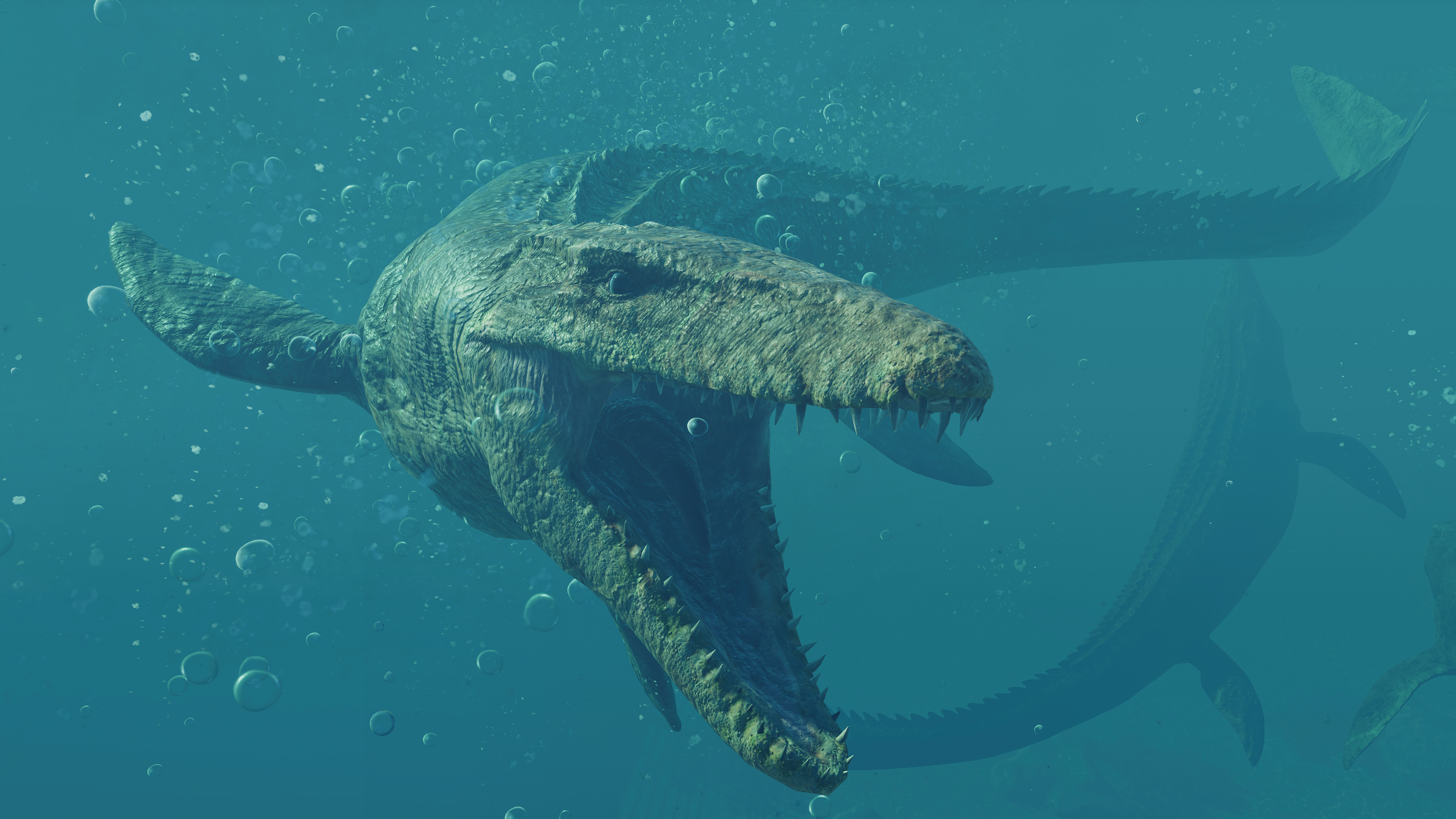
It looks like Frontier has decided to exclude the colourful theme park sets you would find in Planet Coaster or Planet Zoo
Even with a handful of new buildings, there's still not a lot of park customisation. Buildings and guest attractions are only available in one style and there's not much in terms of park decoration. It looks like Frontier has decided to exclude the colourful theme park sets you would find in Planet Coaster or Planet Zoo and instead keep the style of Jurassic World Evolution's parks in line with the movies.
One element that wasn't available to play in the preview but has serious potential is the Chaos Theory mode. It's a part of the game that lets you play through iconic 'what if' moments from the Jurassic Park films, like realising John Hammond's vision of showcasing a tyrannosaurus rex in an amphitheater in San Diego. It's not clear exactly how this mode will play out, but it sounds cool as heck. Jurassic World Evolution 2 also has a sandbox mode, for those looking to get creative without the stresses of goals (as if running a park filled with human-eating reptiles wasn't stressful enough).
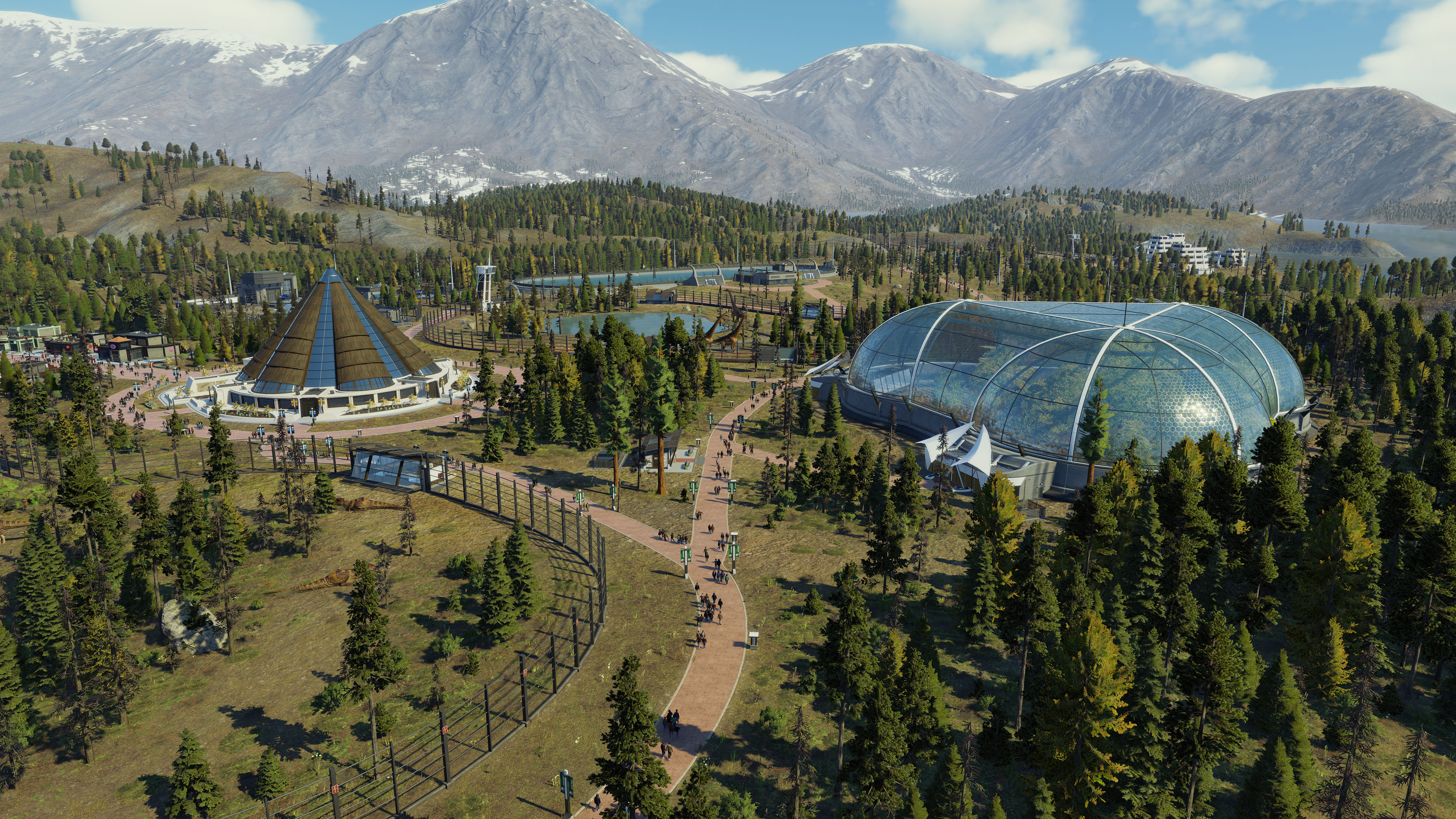
Jurassic World Evolution 2 will be out on PC November 9, 2021 and although much of the management and customisation has stayed the same, Frontier's dinos have gotten a major glow up. Seeing herds of these huge creatures out in the wild from the ground level of a jeep is awesome. It very much harkens back to the original Jurassic Park film when you see the dinosaurs for the first time, and the way Frontier has managed to capture that moment for players to experience in-game is pretty special.
Rachel had been bouncing around different gaming websites as a freelancer and staff writer for three years before settling at PC Gamer back in 2019. She mainly writes reviews, previews, and features, but on rare occasions will switch it up with news and guides. When she's not taking hundreds of screenshots of the latest indie darling, you can find her nurturing her parsnip empire in Stardew Valley and planning an axolotl uprising in Minecraft. She loves 'stop and smell the roses' games—her proudest gaming moment being the one time she kept her virtual potted plants alive for over a year.


